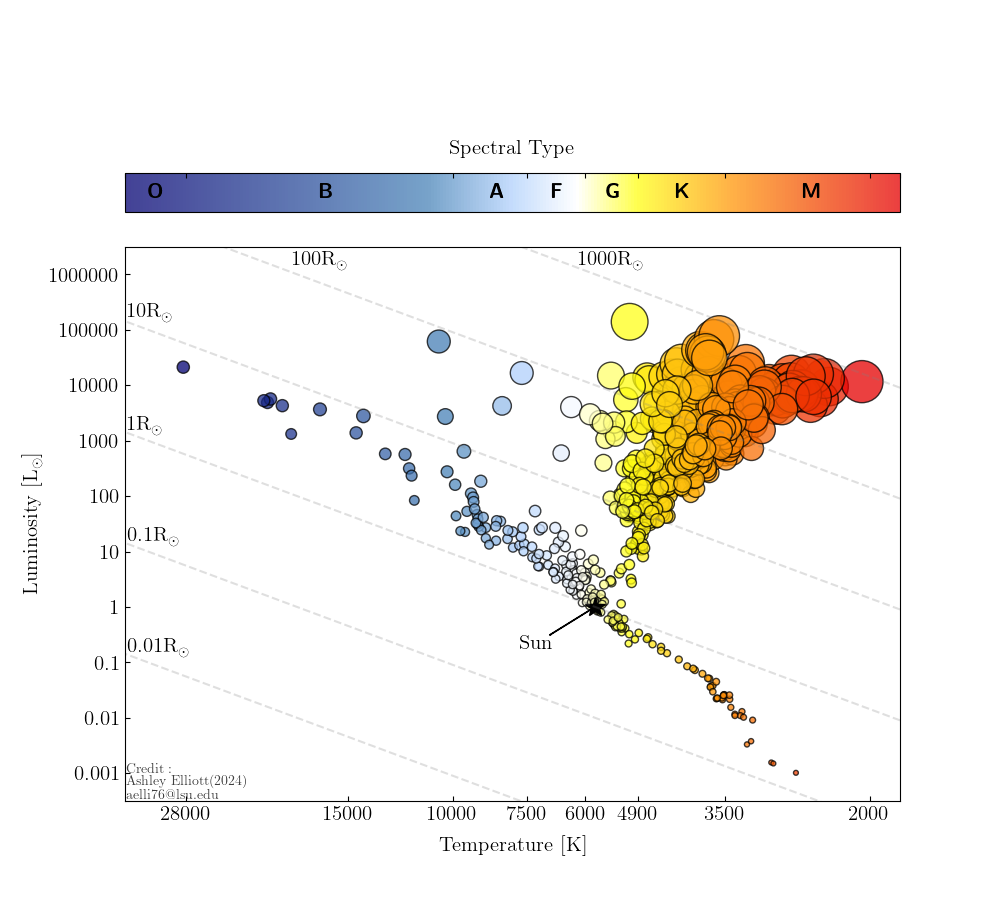stars
Stars are integral to worldbuilding especially if you are constructing an entire solar system.
classes
| class | temperature (K) |
|---|---|
| O | |
| B | |
| A | |
| F | |
| G | |
| K | |
| M |

The Hertzsprung–Russell diagram shows the relationship between stars’ spectral types, radii, luminosities, and effective temperatures.
The Sun is a G-type main-sequence star. Main sequence refers to the diagonal line that runs roughly from the upper left to the lower right of the diagram above.
mass
Mass is a key value here as almost every other attribute of the star can be derived from it. Stellar mass is expressed in solar masses (M☉). A 2 M☉ star has twice as much mass as our Sun. Stars can be as small as
1 M☉ = (
temperature
The following equation gives an approximate temperature (T ) of a star given its B-V color index:
T = 4600 * (1 / (0.92BV) + 0.62) + (1 / (0.92BV) + 1.7)luminosity
Luminosity is the amount of energy emitted by an astronomical object—a star in this case. A star’s luminosity is expressed in terms of solar luminosity (L☉), which is ~
// mass–luminosity relation
L☉ = M☉aFor main-sequence stars, a is set to
| mass | luminosity |
|---|---|
| M < | L☉ ≈ |
L☉ = M☉4 | |
| 2 M☉ < M < 55 M☉ | L☉ ≈ |
| M > 55 M☉ | L☉ ≈ |
Alternatively, luminosity can also be derived from a star’s radius and effective temperature.
L☉ = 4πR☉2σT4σ is the Stefan–Boltzmann constant which is ~5.67 × 10-8 W/(m2K4).
radius
Radius (R☉) can be calculated using luminosity. 1 R☉ =
R☉ = sqrt(L☉/4πσT4)An alternate way of calculating diameter (and radius) based on temperature and luminosity:
d ≈ (5770 2 / T2) * sqrt(L☉)
R☉ = d / 2surface area
A = 4πr2
A = πd2lifetime
A star’s lifetime (τ) can be estimated using its mass. 1 τ = 10 × 109 years (10 billion).
τ ≈ 1010 * M☉2.5resources
- Stellar Lifetimes — GSU